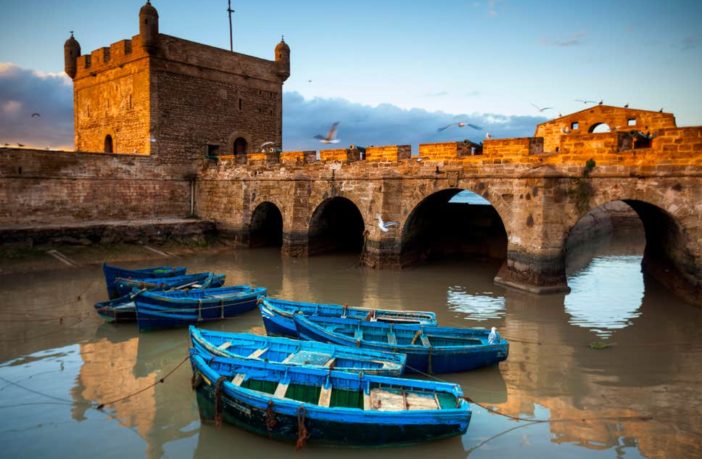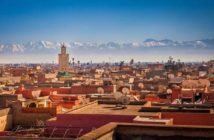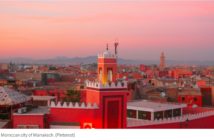The Independent by Cathy Adams
The first thing you’ll notice when you land into the port city of Essaouira on Morocco’s Atlantic coast is the wind. The alizee, or “taros” in Berber, lashes dramatically around the city’s Unesco-listed ramparts and across its beaches, making it one of Morocco’s best spots for kite-surfing.
But there’s plenty to tempt you off the beach too: the pint-sized, pretty medina for starters, and a series of lovely resorts hidden among swathes of argan trees slightly further out of town. Essaouira has a far more French Atlantic feel than its Moroccan neighbours, thanks to a wave of immigration from France.
The city is also now better connected to the UK. Ryanair started a direct flight from Stansted in November 2019 – doing away with the three-hour minibus from Marrakech.
The Independent’s hotel recommendations are unbiased, independent advice you can trust. On some occasions, we earn revenue if you click the links and book, but we never allow this to affect our coverage.

Things to do
Wander the medina
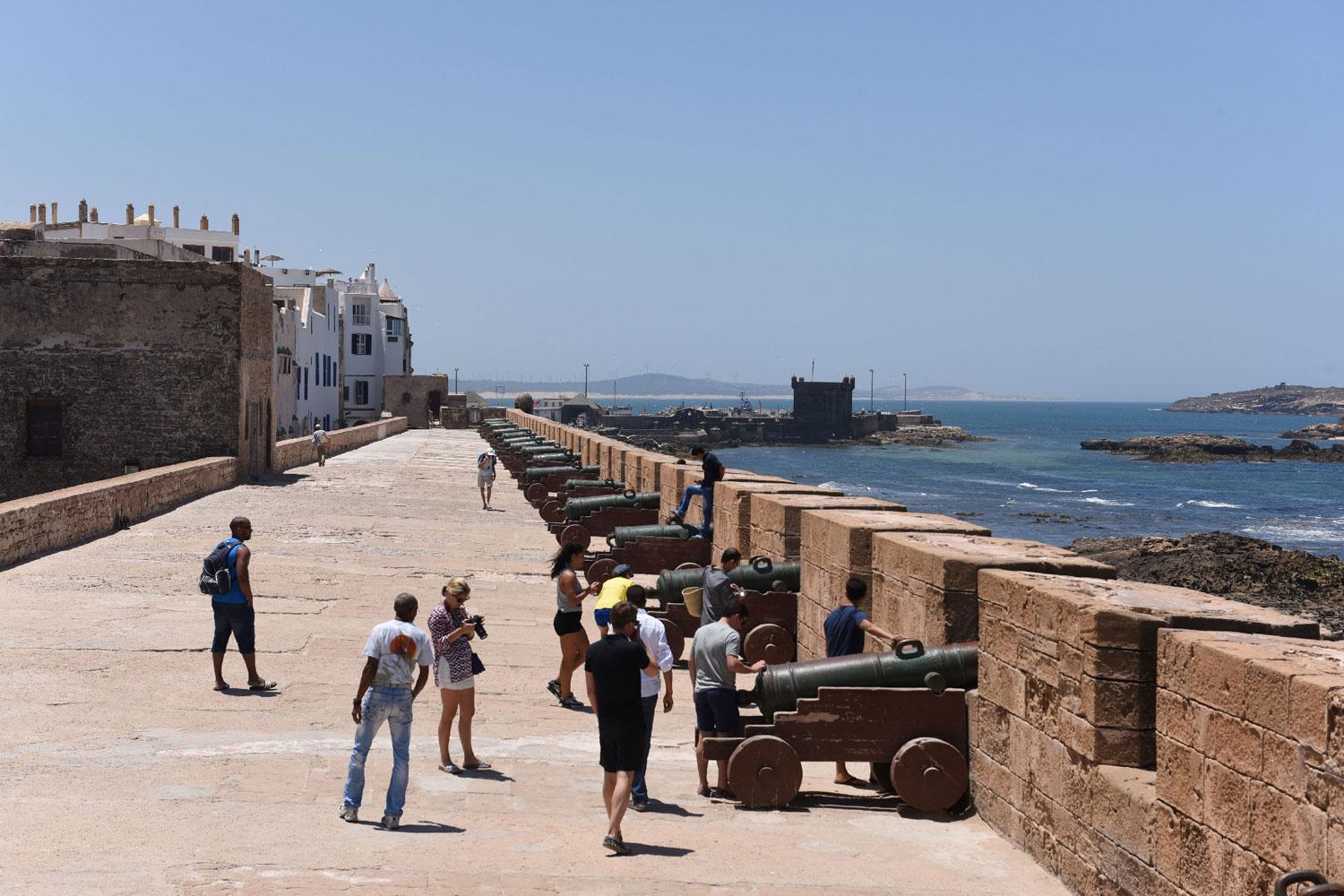
If you’re familiar with the hurly-burly of the Marrakech medina, Essaouira’s version feels positively placid. The Unesco World Heritage Site follows an easy to understand grid system, with the alleyways fanning off three main arteries, all stuffed with cafes, restaurants and boutiques begging for your attention. Look out for “thuya” wood carving, which has been practised here for centuries. The medina is so small that you can see almost all of it in three hours. Finish by wandering up to the ramparts, built in the 1760s by a French military architect. They had a starring role in Orson Welles’ Othello – the director even has a square named after him.
Go kite-surfing
That persistent alizee means Essaouira’s beaches are dotted with every type of surfer – wind, kite and, er, ordinary – but kite-surfing is definitely the thing to do. Beachfront shacks such as Ocean Vagabond can organise lessons; from €75 for a class.
Spend a day blissing on the beach
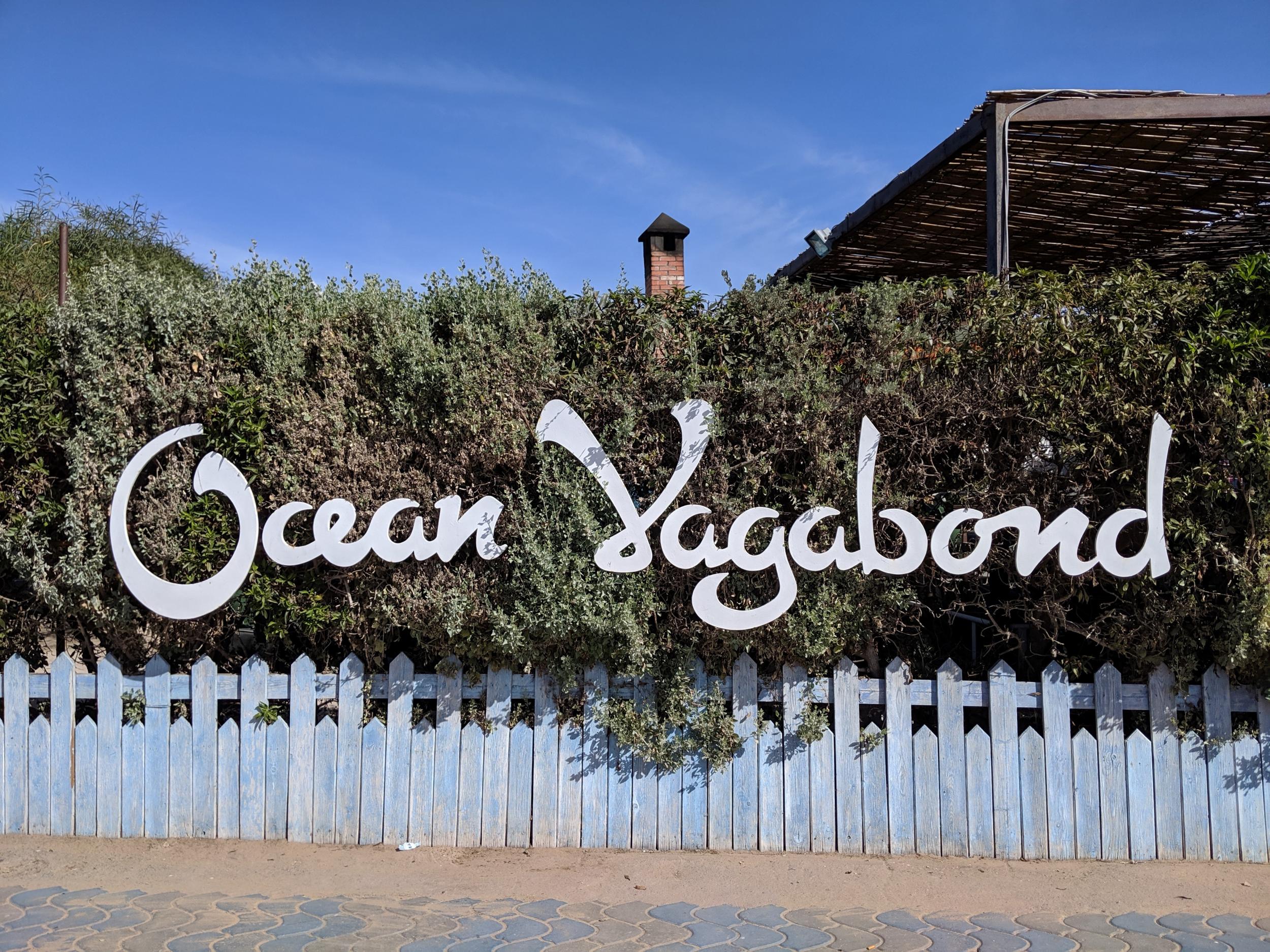
The wide, sandy beach is also perfect for less high-octane activities (although avoid the sellers touting camel and, more bizarrely, horse rides). A row of low-key beach shacks lines the promenade, the most breezy of which is Ocean Vagabond. It has a sprawling garden area dotted with argan trees and cats, where drinks and giant croques monsieurs are served. Open daily for breakfast and lunch; open for dinner on Fridays and Saturdays.
Visit an argan oil co-operative
Argan trees, which bloom across south-western Morocco, are known as Essaouira’s gold. Mining the oil from the trees’ nuts provides a crucial source of work for local women in rural Moroccan communities. A pitcher of argan oil is a common sight on almost every tabletop (it’s a great oil to dip bread into, and packs more of a punch than olive oil), and it’s also used in local cosmetics. There are a handful of co-operatives on the road between Essaouira and Marrakech.
Where to stay
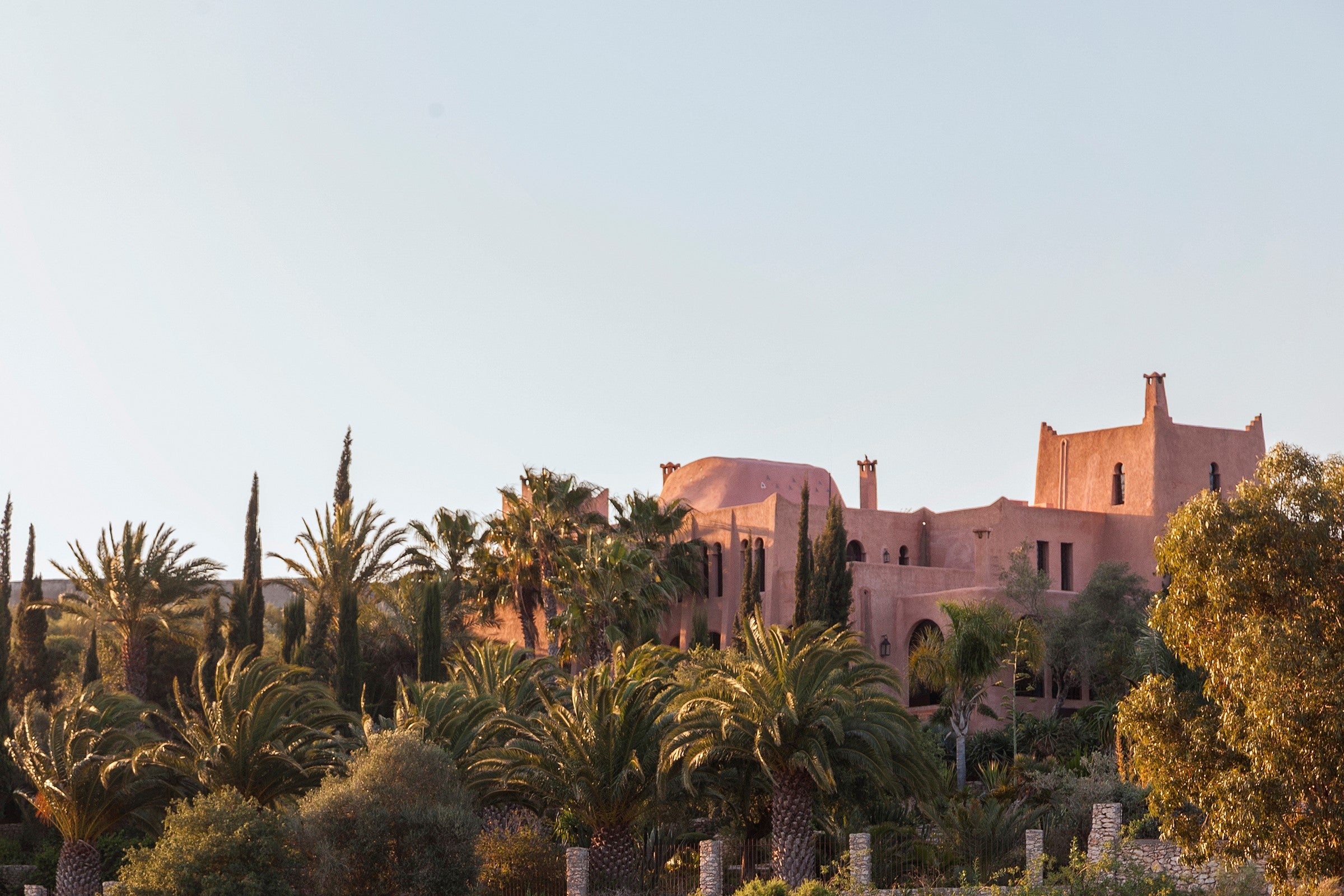
Bougainvillea and palm-stuffed oasis Jardin des Douars is a 12-minute drive out of the medina, and all the better for being further from the action. Its collection of 19 terracotta rooms and six villas overlooks the surrounding valley, through which the Oued Ksob river cuts and argan trees blossom. There’s a tiny, traditional spa and a choice of adults-only or a family pool – great if you want to come with a big group. It’s very well set up as a resort, with a prettified restaurant that serves an in-house twist on Moroccan cuisine alongside a cosy fire in winter. Doubles from around £115, B&B.ADVERTISING
With every surface covered in technicolour Moroccan zellije tiles, Salut Maroc is in the heart of the medina with smashing views out to the ocean. Doubles from €125, room only.
Where to eat
Aladdin’s cave-esque Mega Loft has a decidedly Seventies design scheme – orange and black lacquer circular chairs, old movie posters on the walls and even blue leather suitcases nailed to the ceiling. There’s a shop attached, exhibition space downstairs, and a rooftop bar that overlooks the medina, plus live music most nights. Dishes span fresh fish and Mediterranean dishes, but be warned: there’s no alcohol. Open 12pm-12am, 49 Rue Yemen.
Right by the entrance to the medina at Orson Welles Square, La Table de Madada is part of the Madada complex that includes rooms and a boutique. The upscale restaurant fuses Moroccan and European flavours. Open Wednesday to Monday, 7-11pm.
Essaouira’s patisseries sell a dizzying array of sweet snacks, from flaky croissants to sweet baklava and freshly made almond cookies. If you’re not tempted in by the window displays at Patisserie Boujemaa in the medina, there’s no hope.
Where to drink
Named after the harsh wind that buffets the city, Taros is a rooftop spot perfect for sundowners. There’s a small stage for live music and two viewing platforms even higher up to help amplify the pinky/purple sunset. Open 10am-12am.
Stop for a glass of wine or coffee at Caravane Cafe, just inside the main gate to the medina. The plant-stuffed courtyard is the ideal place to unwind. Rue du Qadi Ayyad, open daily 11am-11pm except Mondays.
Cafe de France serves what might be the medina’s cheapest cup of sugary the a la menthe – at just 10 dirhams (80p). It’s also a prime-people watching spot. Piazza Mulay Hassan, open 6.30am-1am daily.
Where to shop
The Essaouira medina is a great place to start for the predictable tourist trinkets such as carpets, throws, clothing and leather goods. Sellers are not quite as pushy as they are in Marrakech. There are also a number of argan oil sellers, including well-regarded Sidi Yassine.
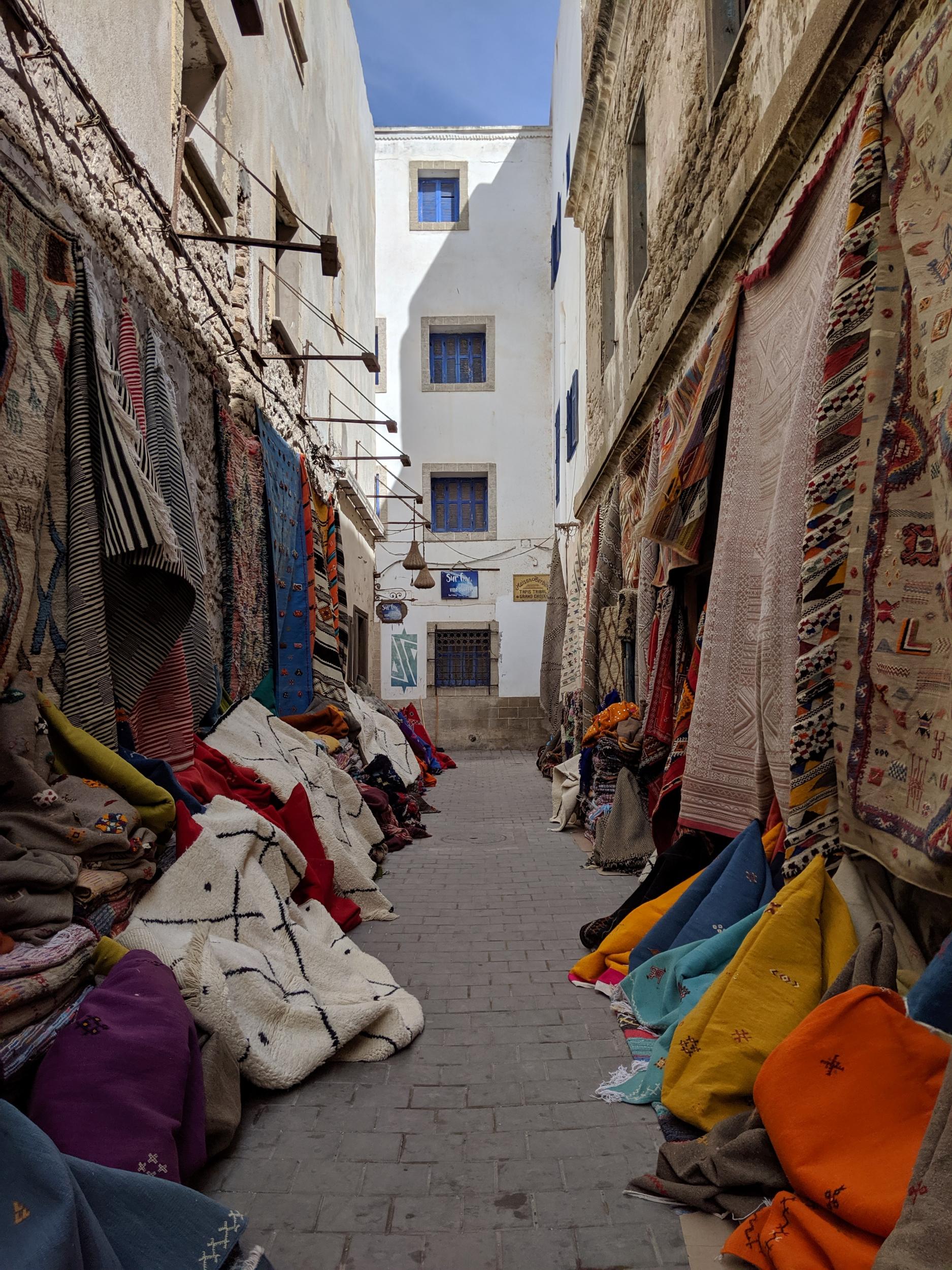
Carefully curated design shops such as Histoire Des Filles and Minimal sell local artisanal items that you want but don’t need.
Architectural highlight
The 18th century Skala du Port ramparts. From atop this fortress there there are breezy views across the Atlantic Ocean and the rollers crashing into the rocks below.
Nuts and bolts
What currency do I need?
Moroccan dirhams.
What language do they speak?
French, but English is widely spoken.
Should I tip?
There isn’t a huge tipping culture, but 10 per cent is appreciated in restaurants.
What’s the time difference?
+1 GMT.
What’s the average flight time from the UK?
3.5 hours.
Public transport
Taxis are widely available, although prices are hard to negotiate. There are plenty of stories about taxi drivers being unable to find tiny riads.
Best view
One of the viewing platforms at sundowner bar Taros, ideally with a Casablanca beer in hand. Swivel your head to catch either the beach or the ramparts – and a fair few seagulls, too.
Insider tip
Taxis are expensive and involve a lot of teeth-clenching haggling. See if your hotel or guesthouse can organise a cheaper transfer for you.
MORE ABOUTESSAOUIRA | MOROCCO TRAVEL | 48 HOURSShow commentsPromoted stories




